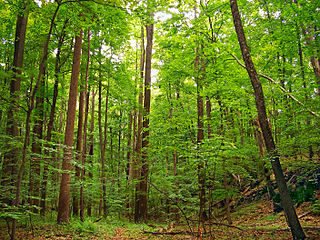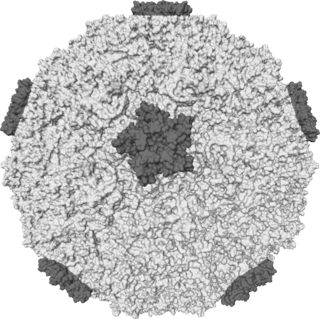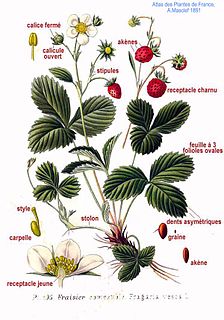
Fragaria is a genus of flowering plants in the rose family, Rosaceae, commonly known as strawberries for their edible fruits. There are more than 20 described species and many hybrids and cultivars. The most common strawberries grown commercially are cultivars of the garden strawberry, a hybrid known as Fragaria × ananassa. Strawberries have a taste that varies by cultivar, and ranges from quite sweet to rather tart. Strawberries are an important commercial fruit crop, widely grown in all temperate regions of the world.
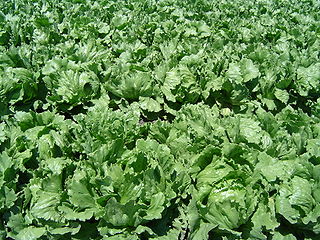
Lettuce is an annual plant of the daisy family, Asteraceae. It is most often grown as a leaf vegetable, but sometimes for its stem and seeds. Lettuce is most often used for salads, although it is also seen in other kinds of food, such as soups, sandwiches and wraps; it can also be grilled. One variety, the woju (莴苣), or asparagus lettuce (celtuce), is grown for its stems, which are eaten either raw or cooked. In addition to its main use as a leafy green, it has also gathered religious and medicinal significance over centuries of human consumption. Europe and North America originally dominated the market for lettuce, but by the late 20th century the consumption of lettuce had spread throughout the world. World production of lettuce and chicory for calendar year 2015 was 26.1 million tonnes, 56% of which came from China.
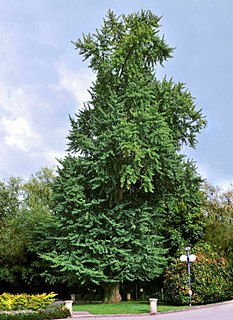
Ginkgo biloba, commonly known as ginkgo or gingko, also known as the maidenhair tree, is the only living species in the division Ginkgophyta, all others being extinct. It is found in fossils dating back 270 million years. Native to China, the tree is widely cultivated, and was cultivated early in human history. It has various uses in traditional medicine and as a source of food.
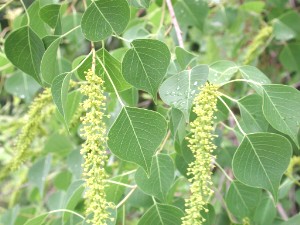
Triadica sebifera, the Chinese tallow, Chinese tallowtree, Florida aspen, chicken tree, gray popcorn tree, or candleberry tree, is a tree native to eastern Asia. It is native to eastern China, and Taiwan, and introduced to Japan in Edo period. The waxy coating of the seeds is used for candle and soap making, and the leaves are used as herbal medicine to treat boils. The plant sap and leaves are reputed to be toxic, and decaying leaves from the plant are toxic to other species of plants. The specific epithets sebifera and sebiferum mean "wax-bearing" and refer to the tallow that coats the seeds.

A perennial plant or simply perennial is a plant that lives more than two years. Some sources cite perennial plants being plants that live more than three years. The term is often used to differentiate a plant from shorter-lived annuals and biennials. The term is also widely used to distinguish plants with little or no woody growth from trees and shrubs, which are also technically perennials.

A seed drill is a device that sows the seeds for crops by positioning them in the soil and burying them to a specific depth. This ensures that seeds will be distributed evenly.
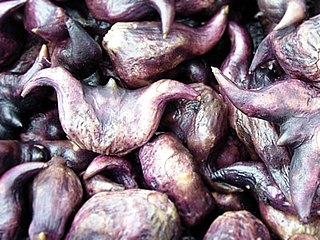
The water caltrop is any of three extant species of the genus Trapa: Trapa natans, Trapa bicornis and the endangered Trapa rossica. It is also known as buffalo nut, bat nut, devil pod, ling nut, lin kok, ling kio nut, mustache nut or singhada.

Nelumbo nucifera, also known as Indian lotus, sacred lotus, bean of India, Egyptian bean or simply lotus, is one of two extant species of aquatic plant in the family Nelumbonaceae. It is often colloquially called a water lily. Under favorable circumstances the seeds of this aquatic perennial may remain viable for many years, with the oldest recorded lotus germination being from that of seeds 1,300 years old recovered from a dry lakebed in northeastern China.
Dow AgroSciences LLC is a wholly owned subsidiary of the Dow Chemical Company specializing in not only agricultural chemicals such as pesticides, but also seeds and biotechnology solutions. The company is based in Indianapolis, Indiana, in the United States. On 31 January 2006, Dow AgroSciences announced that it had received regulatory approval for the world's first plant-cell-produced vaccine against Newcastle disease virus from USDA Center for Veterinary Biologics. Dow AgroSciences operates brand names such as Sentricon, Vikane, Mycogen®, SmartStax®, Enlist™, Pfister Seed®, PhytoGen®, Prairie Brand Seed®, Alforex Seeds®, Profume, Dairyland Seed®, and Brodbeck Seed®.
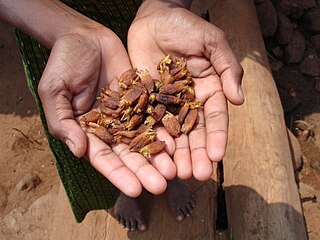
Non-timber forest products (NTFPs), also known as non-wood forest products (NWFPs),minor forest produce, special, minor, alternative and secondary forest products, are useful substances, materials and/or commodities obtained from forests which do not require harvesting (logging) trees. They include game animals, fur-bearers, nuts, seeds, berries, mushrooms, oils, foliage, pollarding, medicinal plants, peat, mast, fuelwood, fish, spices, and forage.
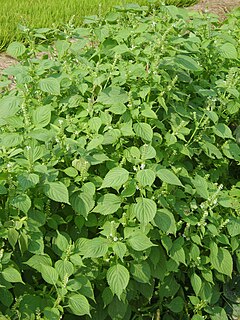
Perilla frutescens, commonly called perilla or Korean perilla, is a species of Perilla in the mint family Lamiaceae. It is an annual plant native to Southeast Asia and Indian highlands, and is traditionally grown in the Korean peninsula, Southern China, Japan and India as a crop. An edible plant, perilla is a very attractive plant for the garden and attracts butterflies. It is an aromatic plant with a strong minty smell. Various perilla varieties are traditionally used by local people, the leaves are used as a vegetable and the seeds supply nutritious cooking oil. A variety of this plant, P. frutescens var. crispa or "shiso", is widely grown and is one of the most popular garnishes in Japan, used as an antidote for fish and crab meat allergy or as a food colorant. In the United States, perilla is a weed pest, toxic to cattle after ingestion.

Scaphium affine is a tree species in the family Malvaceae, subfamily Sterculioideae. It is native to mainland Southeast Asia and no subspecies are listed in the Catalogue of Life.

Scaphium longiflorum is a species of plant in the family Malvaceae. It is a tree endemic to Peninsular Malaysia.
Sterculioideae is a subfamily of the family Malvaceae containing evergreen and deciduous trees and shrubs.

Namtok Phlio National Park is a national park in Chanthaburi Province, Thailand. Home to waterfalls and forests, the park is also the site of a stupa and chedi from the reign of King Rama V.
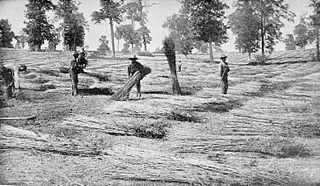
Cannabis is illegal for use as a drug in Kentucky, United States, though non-psychoactive CBD oil is legal in the state, and Kentucky has a lengthy history of cultivating industrial hemp for fiber since 1775.

The adzuki bean, or English red mung bean, is an annual vine widely cultivated throughout East Asia for its small bean. The cultivars most familiar in Northeast Asia have a uniform red color, but white, black, gray, and variously mottled varieties also are known.
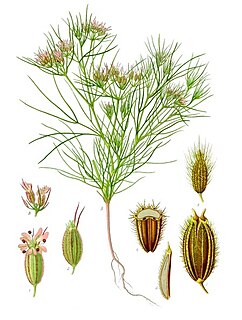
Cumin is a flowering plant in the family Apiaceae, native to a territory including the Middle East and stretching east to India. Its seeds – each one contained within a fruit, which is dried – are used in the cuisines of many cultures in both whole and ground form. Although cumin is thought to have uses in traditional medicine, there is no high-quality evidence that it is safe or effective as a therapeutic agent.
